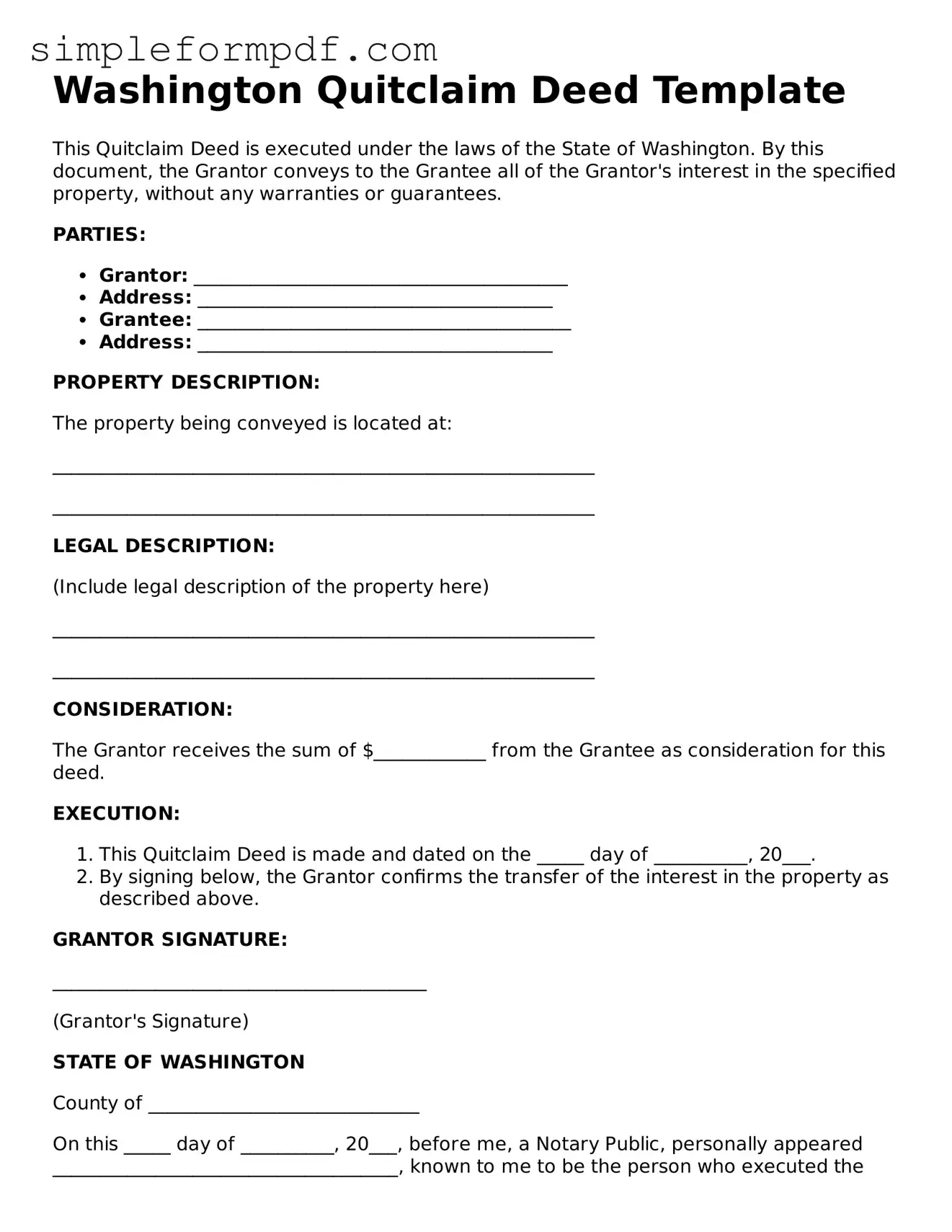Washington Quitclaim Deed Template
This Quitclaim Deed is executed under the laws of the State of Washington. By this document, the Grantor conveys to the Grantee all of the Grantor's interest in the specified property, without any warranties or guarantees.
PARTIES:
- Grantor: ________________________________________
- Address: ______________________________________
- Grantee: ________________________________________
- Address: ______________________________________
PROPERTY DESCRIPTION:
The property being conveyed is located at:
__________________________________________________________
__________________________________________________________
LEGAL DESCRIPTION:
(Include legal description of the property here)
__________________________________________________________
__________________________________________________________
CONSIDERATION:
The Grantor receives the sum of $____________ from the Grantee as consideration for this deed.
EXECUTION:
- This Quitclaim Deed is made and dated on the _____ day of __________, 20___.
- By signing below, the Grantor confirms the transfer of the interest in the property as described above.
GRANTOR SIGNATURE:
________________________________________
(Grantor's Signature)
STATE OF WASHINGTON
County of _____________________________
On this _____ day of __________, 20___, before me, a Notary Public, personally appeared _____________________________________, known to me to be the person who executed the within instrument and acknowledged that he/she executed the same.
______________________________________________
(Seal) Notary Public in and for the State of Washington
My commission expires: ___________________
